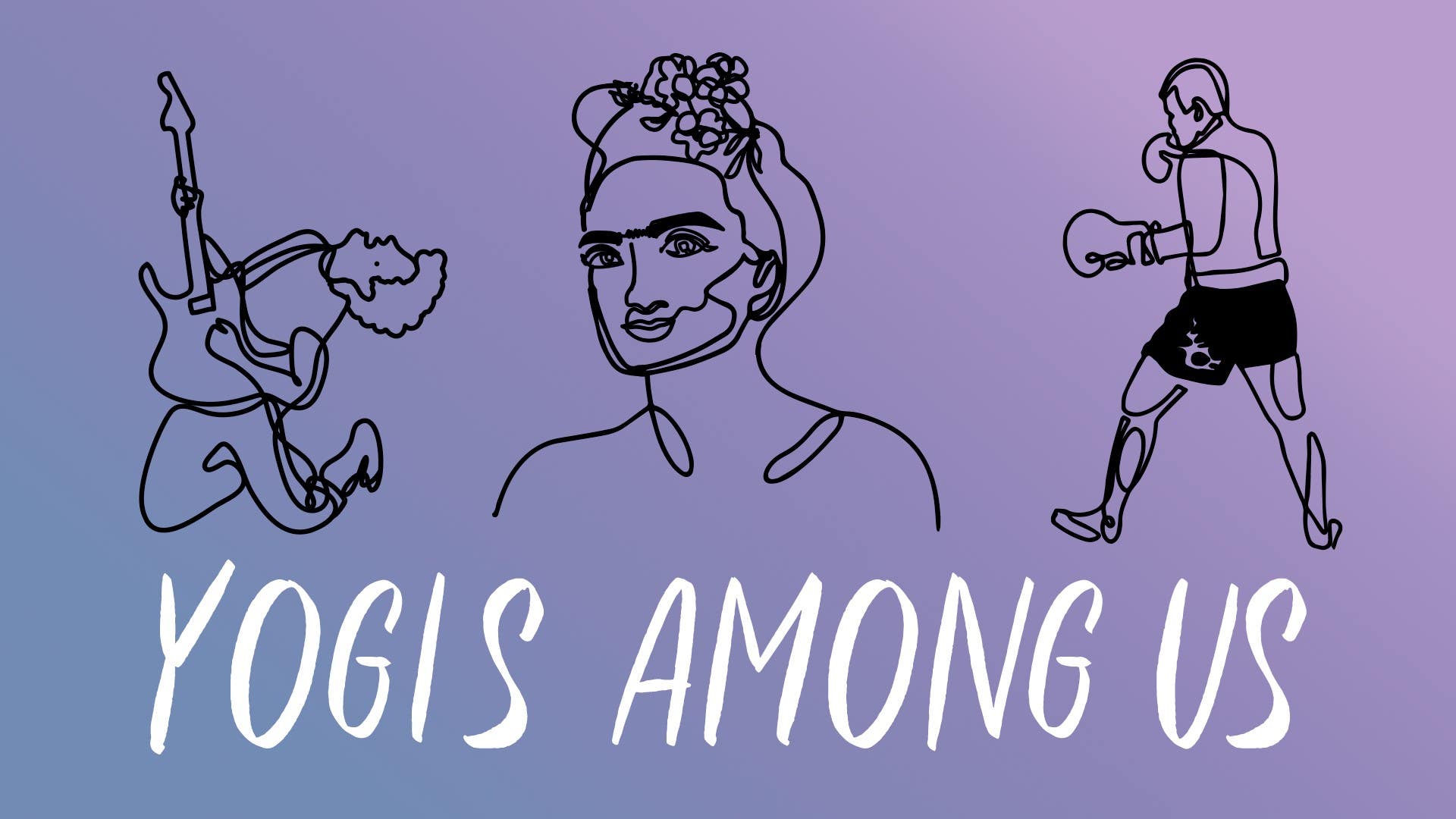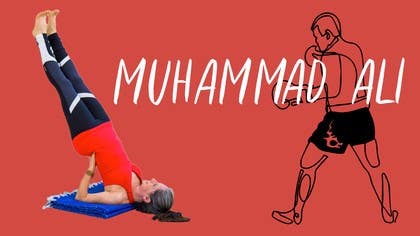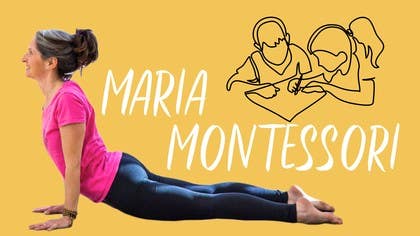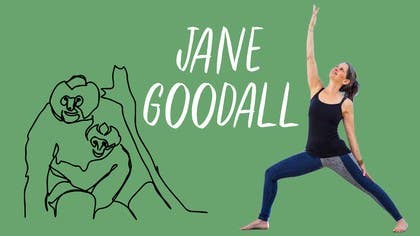Description
About This Video
Transcript
Read Full Transcript
Chapter 1
Talk
In June 2016, Playbill magazine, the official Broadway rag, ran the following lead story. Muhammad Ali, Broadway musical star, dies at age 74. And the first line of that story was, this headline is not a joke. So when you think about his persona as this big and bold and provocative and eloquent and outspoken and rabble-rousing person larger than life, it's not surprising that he would have gotten on stage on Broadway. And he sang every song in the score of a musical called Buckwhite.
And he played a character not that much unlike himself, a fiery preacher who was lecturing in the play to a group of African-American revolutionaries. As a boxer, he had this brute strength and these speedy feet and this signature rope-a-dope move. And the truth is that even though he won the heavyweight boxing title three times, the only boxer to ever achieve that, he was more famous for the way he used his voice. He had this unrelenting insistence for using his voice to speak truth to power. And in those eloquent expressions of voice and action, he used his voice to bear out his conscience.
His first famous act of using this expression was after he won the first heavyweight championship from Sonny Liston, beating him in a huge upset. He changed his name. He was born and raised as Cassius Clay and well-known in the boxing world as Cassius Clay, but he chose to adopt the name that was given to him when he converted to Islam. And that's when he became Muhammad Ali. Interestingly, the press was slow to catch on and it was offensive to him and many other Ali enthusiasts that many leading publications were still referring to him as Clay.
When he made it very clear that he no longer associated with this name, he referred to it as his slave name. And so he was adamant about asserting himself as a free man, as a powerful man, and as a voice for the African-American community, still very much in the throes of the civil rights movement. His next big and bold statement was even bigger and even bolder and had even bigger stakes. And that was when he conscientiously objected to the Vietnam War and he refused to be drafted. He showed up when his number was called and he said, my religion does not allow me to wage war on another human being and I won't do it.
He said that he, why would he allow himself to be sent 10,000 miles away to put on the uniform of a country, drop bombs and bullets on brown people when the black people in his own hometown were still being treated like dogs and being refused their basic human rights. He was stripped of his boxing title. He was denied the ability to box for four years and he didn't give in. He appealed it and eventually the Supreme Court overturned the decision and he was, had his titles reinstated and he reengaged back in his boxing career, but he lost years that were in the height of his athletic prowess. It was during that period of time that he went and starred in the Broadway musical.
A New York Times columnist in response to Ali's civil disobedience said that the standard of what constitutes a great athlete is now raised to a higher one. He said that it's not good enough any longer that you have a killer jump shot, etc., etc. It's what are you doing to advance the cause of your people and what are you doing to help this country uphold the covenant of its principles and Ali was unrelenting about that. There's a beautiful documentary that was made in 1996 called When We Were Kings that features Ali and follows him to the Rumble in the Jungle, the famous bout against George Foreman in Zaire and there are these beautiful heartwarming scenes of him practicing and training in the streets of Kinshasa and you see him jogging along and he's being followed by swarms and swarms of children and you can see the admiration and the respect and the awe in their eyes as they chase after him and he's, and he's chanting his rhymes and he's being playful with them and he's showing them moves and in this moment he becomes so alive and so powerful as this strong voice, this loving presence, this man who took his abilities as an athlete and turned them into these abilities as a communicator to speak his truth and the truth on behalf of so many others who were voiceless. The yogic teaching here that's relevant is found in the yoga sutras in the collection of recommendations for how to live in the world, the yamas and the niyamas.
So the niyamas are the second half of this which talk about our observances when we're inside of our own selves. What do we do to practice quietly when no one's looking? And the yamas are the outward observances, the behaviors that help us negotiate our role in the world and be good human beings to each other and ultimately to ourselves. And so the second of the five yamas in Sanskrit is satya and it means truthfulness. It means not just not lying but it means speaking truth in word and in action that is suggestive of an integrity of what we believe, what's important and what's real for us.
And for this reason Muhammad Ali I believe was a yogi in the way he modeled satya for the world. A practice that evokes this quality is something centered around the throat. So where the voice emerges from deep inside the body and gets expressed out into the world. So we begin this practice in a reclined position where we can really expose the throat in a supported way.
Chapter 2
Practice
So coming to lie down, make sure that you have an even plane for the body so that the back of the head is on the same level surface as the upper back and shoulders.
And then with your head facing the ceiling just gently turn rolling it to one side and rolling it to the other so you're not making any adjustment to the back of the head at all. You're simply rolling to the left and the right. And then returning the head to center this time bring awareness to where the back of your skull is meeting the mat. So keeping your face facing the ceiling tip one ear toward its own shoulder. So you're stretching out the opposite side of the neck without rotating the head.
And you can reach with the same side arm to encourage the head a little further over to the side. And then when that feels satisfying bring the head back up to center. And again keeping the face facing the ceiling tip to the other side. So the opposite side of the neck stretch out maybe reach the hand up encourage the head a little further over to the side. And come back to center.
Repeat to the first side again and this time keep the head cocked over to that side but turn the face so you're rotating the head to one side the nose is starting to turn toward the shoulder that you've tipped over. And then keeping the head tilted but rolling the nose up to the opposite diagonal. Do that a couple more times. Bring the head back to center tip it over to the other side and then rotate the nose down toward the shoulder and up toward the opposite diagonal corner and back to center. So still maintaining contact the back of the head on the floor slide your chin up as far as it will go and then slide the chin down as far as it will go without losing contact between the head and the mat.
So essentially we've just moved the head and the neck up and down side to side and rotated it and now we'll repeat those movements from a seated position opening up the space at the throat center in all possible directions. So now imagine you've got the floor still behind you so the back of the skull and the back of the spine and the shoulder blades are on one level plane the upper back and the back of your head. Tip the head to one side bringing the ear toward its own shoulder. Bring it back up to center tip it to the other side. Back up over to the first side keep the head tilted and then simply rotate the nose down and rotated up.
Return to center repeated on the other side the head goes the ear goes toward its own shoulder and then we turn the nose down and turn it back up to center. So here's the challenging one when we lift the chin remember there's still this imaginary floor behind the head so you're gliding the chin up without throwing the head back. So it will only go so far if we throw the head back the throat becomes overexposed and then the voice starts to sound funny and I'm only slightly exaggerating that. So a gentle lift maintaining that nice even plane you can test your own voice to make sure it's still clear and then in the other direction dropping the chin keeping contact with the back of the head on that imaginary plane behind you without throwing the head forward and then we compress the throat and the voice on the opposite side. So a few times lifting keeping the neck long on the front and the back and dropping.
And then back to center. Open up the arms nice and wide reach through the fingertips and then bring your arms in front of you crossing one elbow over the other bend the elbow so your fingertips point to the ceiling you can press the backs of the hands together against each other or maybe if it's available you can wrap the wrists and press the palms against each other whichever way there's pressure hand to hand which if you engage that a little deeper you can feel it opening the shoulders and the collarbones which are intimately connected with the throat. And now a tiny little drop of the chin a tiny little lift the back of the head and you'll feel the throat recede just a little bit so it's like you're keeping this watchful gaze out in front of you a little bit of retreating like the rope a dope in the corner with the ability to protect yourself and keep a watchful eye on the moment where it's safe to open up and perhaps spring forward we open up wide reach out and then do it with the other arm on top it's going to be the one that feels weird cross the elbows bend fingertips pointing to the ceiling press the backs of the hands together or wrap the wrists and press the palms together the pressure of the hands will help you feel wide across the space of the shoulders the collarbones drop the chin ever so slightly raise the back of the head ever so slightly retract a little bit into the throat find the breath and then open up wide and release the arms reach one arm up nice and tall through the fingertips and then let the top of the arm bones settle into the shoulder so there's no strain and compression in the side of the neck with this raised arm bend the elbow place the palm somewhere on your back take the other arm out to the side sweep it behind you as far as you can and then bend the elbow and place the back of your hand on your back sometimes the fingertips magically touch and you can clasp them together and give a little gentle pull sometimes they don't touch and you can just rest the hands on the back the upper arm has the palm on the back the lower arm has the back of the hand on the back notice if there's a tendency to throw your head forward in some belief that this is going to bring your arms further back it's not it just brings your head forward and collapses the throat so we're looking for a neutral neck the very top of the spine is sitting quietly in its lifted length just like the rest of the spine and release you shake out the arms and do the other side so the other arm comes up reach through the fingertips without pulling the top of the arm bone out of its socket so resting the arm in a neutral position in the shoulder as it's raised bend the elbow palm to the upper back reach the other arm out sweep it behind your back as far as it'll go and then at the last minute bend the elbow and place the back of the hand against your back have an awareness of where your fingertips are whether they're meeting or not is not important notice where your head is is there a collapse backward or a throwing forward or a simple neutral stance and release shake it out and now we'll come up to stand grab a block and stand with your back to a wall your heels just a few inches from the wall take the block on its on its wide setting and put it right behind your head and press the back of your head into the block so you've got a firm grip on it with your head you don't need your hands anymore bring your hands to your hips take a baby step forward with your feet and then measure so that you feel like your hips are over your ankles and you'll notice that in order to do that the chest has to lift a little bit and the chin has to lift a little bit so we're beginning to open the front of the throat we're not looking to throw the head back really far and that's what the block is there for to prevent that from happening and we're also not looking to compress the lower back by shifting the hips too far forward so hips over the ankles legs are vertical we take another baby step forward we bring the hips forward here so there's somewhat over the ankles and now the hands on the hips can help you ground the pelvis and continue to maintain traction and space length in the lower back and you start to lift the chin a little higher and if your lower back feels nice and clear and you can let go of your hands the pelvis feels grounded you can lace your fingers behind your back squeeze your elbows toward each other squeeze the shoulder blades toward each other and lift the heart even higher and tip the back the head back just a little bit further as the heart lifts the gaze lifts the idea here is that the lower body is stable and neutral and the spine is extended into this nice comfortable arc that reaches all the way up through the throat to the base of the skull a good way to test whether your head is tipped back too far is to say something and if the voice comes through clearly you're good maybe you're great maybe you're the greatest another couple of breaths and then release step back carefully reach up grab the block and put it down come to your knees table pose set up for downward facing dog so the fingers are spread wide and the base of each knuckle is rooted into the mat tuck the toes and take a few movements of the spine exhaling into a nice shape of the cat and inhaling into a hammock shape of the cow and then from here with the sitting bones raised nice and high push the floor away lift the hips lengthen the spine lengthen the legs and breathe come up high on the toes bend the knees take the hips a little higher and then just play for a few beats of breath and when you find the nice centered lengthened dog pose shape that's satisfying bring awareness to your throat notice how the head is hanging and there's no work that needs to be done the spine is long all the way up through the neck to the base of the skull and the front of the throat is just naturally open and then release your knees to the floor and gather up two blankets so neatness counts when we use blanket props you want to make sure that you have a clean folded edge that's facing outward away from the wall neaten it out smooth it so there's an alleyway between the wall and your blanket edge sit in it snuggle against the wall and then pull the blankets close to the edge of the hip so you've narrowed the alley to just the width of your pelvis and if you sit on the front edge of the mat the edge that you're facing then when you swing your legs up the wall and lie back on the blanket ideally you have your blanket your shoulders landing at the edge of the blankets and your head resting comfortably on the floor if this is not comfortable take one of the blankets away and if it feels like it's not much lift at all you can add some height by adding one or two more blankets so now we're going to keep the feet on the wall the whole time to start bend your knees and press the soles of your feet against the wall dig your elbows down right next to your rib cage so your upper arms are hugging the rib cage and pressing firmly into the blanket stack and then you can use this this strength of the arms and this grounded platform for your shoulders to roll the spine up lift the tail lift the lower spine lift the rib cage the chest and the upper spine catch your lower back with your hands and straighten your legs out so that your heels are on the wall and your toes are pulling back so now we have this planked shoulder stand that's supported by the wall and the blankets if you feel like your shoulders are falling off the back edge of the blanket stack come down and rearrange resist the urge to bring the chin to your chest which will flatten the back of the of the cervical spine and compress the throat instead bring the chest to the chin and breathe you can test your throat by saying something and feel the clarity that you can preserve and when you're ready to come down bend the knees feet to the wall release hold of the pelvis and roll the spine down and then you can push your feet into the wall and shimmy backwards just until the shoulder blades come to the floor bring your feet to the floor rest here for a breath or two so to remove the blankets press into the feet press into the shoulders lift the hips just enough for clearance so you can pull the blankets out of the way roll the spine back down and then shimmy a little further backwards until you can get your legs straight without touching the wall and here we'll prepare for fish pose the traditional follow-up to shoulder stand so roll to one side take a straight arm palm down put it under your back and then roll to the other side and do the same palm on top of the first hand and now this will encourage you to draw the shoulder blades closer together underneath your back and in that action the chest starts to puff up and we'll emphasize that action while we keep perky toes active engaged legs shift the weight onto your elbows puff the chest up even higher and tip the head back so you find a comfortable resting place on the top of your head close to the crown without tipping the head so far back that you overexpose the throat or compress the neck and again the best way to test this is to speak your truth say something with your own clear voice if it sounds like you you're good on an exhale shift a little more weight into the elbows slide the head back to neutral we'll feel the shoulders land on the floor again bend the knees lift the hips free your arms and come up to sit the culmination of any nice throat opening practice would be to participate in a chant so join me if you'd like we'll do a call and response round and then one together of the Gayatri Mantra Prachodaya and then once together Ombor bhuvasvaha tatsavitur varenyam bhargo devasyadimahi dyo yona prachodaya bring your palms together at your heart may all beings be happy may all beings be free from suffering may all beings be able to speak their own truth may all beings be at peace thank you for being here
Yogis Among Us
Comments
You need to be a subscriber to post a comment.
Please Log In or Create an Account to start your free trial.







